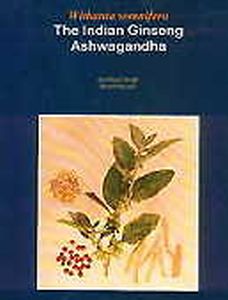
Contents: Preface. I. Introduction: 1. Folklore uses of Ashwagandha (Withania somnifera). 2. Uses in traditional systems of medicine. II. International Occurrence: 1. Geographical distribution. 2. Vernacular/regional names. III. Botany: 1. Classification. 2. Plant's description. 3. Interspecific variability. IV. Pharmacognosy: 1. Root. 2. Leaf: i). Morphology. ii). Anatomy. 3. Stem: i). Morphology. ii). Anatomy. iii). Cell contents. 4. Floral parts: 1. Morphology. 2. Histology: i). Calyx. ii). Corolla. iii). Androecium. iv). Gynoecium. 5. Fruit. 1. Morphology. 2. Histology: i). Epicarp. ii). Mesocarp. iii). Endocarp. iv). Placentae. 6. Seed: 1. Morphology. 2. Histology. 7. Embryology. 8. Seedling anatomy. V. Chemistry: 1. Chemical constituents of Ashwagandha: i). Alkaloids. 2. Withanolides: i). Chemotypes: a). Chemotypes of Israel. b). Indian chemotype-I. c). South African chemotype--I. 2. Genetic variability in chemical constituents. 2. Withanolides of other solanaceous plants. VI. Pharmacology. VII. Cultivation: I. Agronomical perspectives: 1. Soil and climate. 2. Seed rate and germination. 3. Sowing time. 4. Fertilizer application. 5. Thinning and weeding. 6. Diseases and pests: i). Fungal diseases. ii). Viral diseases. iii). Phytoplasma disease. iv). Nematode disease. v). Pests. 7. Harvesting. 8. Post-harvest technology. 9. Yield. 10. Economics of cultivation. II. Genetics and Crop Improvement: 1. Cytogenetics. 2. Crop improvement. 3. Genetic variability. III. Physiological Manipulations. IV. Cell and Tissue Culturing. V. Genetic Engineering. VIII. Concluding remarks. References. Subject index.
"Ashwagandha (Withania somnifera) has been used as medicine and cultivated for centuries in India . Its roots are known to posses restorative and adaptogenic properties, of the type ascribed to Ginseng roots. This book comprehensively compiles the information about Ashwagandha plant available in the traditional and present literature, covering more than 585 references. This publication will be useful to persons interested in the use of plant materials as medicine and food supplement for the prevention and cure of common diseases and to the researchers of useful secondary metabolites."